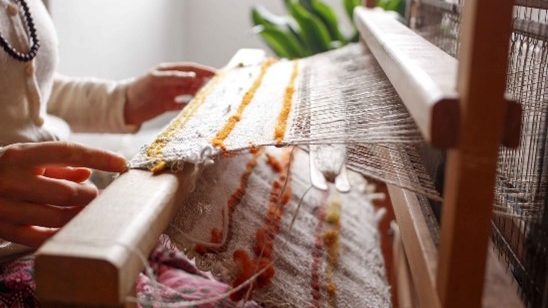Clothing is more than some fabric stitched together, It’s a reflection of culture, society, and humans. Clothing has evolved significantly, from the earliest days of civilization to the modern fashion runways in fascinating ways. Let’s embark on a journey to see the origin, evolution, and history of clothing.

The story of clothing begins in the prehistoric era, a thousand years ago. Early humans wore simple garments made from animal skins and plant materials to protect themselves. These clothes provided warmth and protection, marking the origin of clothing and making clothes a practical necessity.
Over time clothing evolved as human societies progressed, around 27,000 years ago, the invention of weaving revolutionized the way of making garments. The creation of textiles from fibers like flax, wool, and cotton, made clothing more versatile and durable. This laid a base for the textile traditions emerging across different cultures and places across the world.
The ancient civilizations of Mesopotamia, Egypt, and China played an important role in shaping the history of clothing. Around 5,000 years ago, in Mesopotamia, people crafted garments from wool and linen with intricate patterns and designs. Meanwhile, In Egypt, linen garments were synonymous with luxury and status with the wealthy adorned in robes and headdresses with jewels and precious stones. In China, during the Han Dynasty, Silk was a symbol of wealth and prestige. The discovery of silk production techniques by the Chinese led to the establishment of the legendary Silk Road, which provided a network of trade routes connecting the East and West and influenced fashion along its path.
The Greek and Roman civilizations also have an imprint on the history of clothing. In ancient Greece, draped garments like the Chiton and Himation reflected the ideals of beauty and athleticism. The Toga of ancient Rome symbolized citizenship and authority, with its style and color it indicates the wearer’s status. With the fall of the Roman Empire and the onset of the Middle Ages, Europe witnessed a shift in its clothing. With the rise of Feudalism, clothing served as a marker of social hierarchy. The long and colorful royalty and nobility contrasted with the simple attire of peasants and serfs.
During the Renaissance, Europe experienced a revival of art, culture, and fashion, with the invention of the printing press, the spread of fashion trends increased across the continent. During the Age of Exploration in the 15th and 16th centuries, European explorers ventured to distant lands, encountering textiles and garments from Asia, Africa, and America. This period saw a diversity of clothing styles with the introduction of new fabrics like cotton, velvet, and damask.
Advances in mechanized textile manufacturing led to mass production of garments, making them more affordable and accessible to all. Ready-to-wear clothes were more prevalent, revolutionizing the fashion industry. The 20th century witnessed rapid advancements in technology and globalization, which shaped the clothing trends a lot. With the emergence of couture houses such as Versace, Christian Dior, and Chanel, fashion was transformed into art, blurring the line between clothing and culture. The rise of fashion accelerated the pace of trend cycles, this made clothing more disposable than ever before.
Clothing continues to evolve as a dynamic expression of identity and creativity to date. From streetwear to simple and sustainable fashion, contemporary clothing reflects the diverse values and morals of society. Throughout our journey of years in history, clothing remains not merely a garment to cover the body but a fabric weaving together human civilization.
ARTICLE BY – ANUSHKA JADEJA | EDITED BY – SAHIL HARVANI



